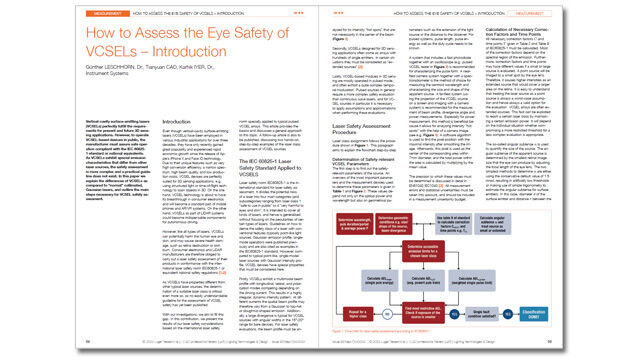How to Assess the Eye Safety of VCSELs – Introduction

2022/09/15
Article by Dr. Günther Leschhorn, Tianyuan CAO, Dr. Karhik Iyer
Vertical-cavity surface-emitting lasers (VCSELs) perfectly fulfill the requirements for present and future 3D sensing applications. However, to operate VCSEL-based devices in public, the manufacturer must assure safe operation compliant with the IEC 60825-1 standard or national equivalents. As VCSELs exhibit special emission characteristics that differ from other laser sources, the safety assessment is more complex and a practical guideline does not exist. In this paper we explain the differences of VCSELs as compared to “normal” collimated, Gaussian lasers, and outline the main steps necessary for VCSEL safety assessment.
Even though vertical-cavity surface-emitting lasers (VCSELs) have been employed in various industrial applications for over three decades, they have only recently gained great popularity and experienced rapid economic growth since the release of Apple’s iPhone X and Face ID technology. Due to their unique features such as very high conversion efficiency, a narrow spectrum, high beam quality, and low production costs, VCSEL devices are perfectly suited for 3D sensing applications, e.g. using structured light or time-of-flight technology to scan objects in 3D. On the one hand, VCSEL technology is about to have its breakthrough in consumer electronics and will become a standard part of mobile phones and AR/VR systems. On the other hand, VCSELs as part of LIDAR systems could become indispensable components for autonomous driving.